
The Sega CD, known as Mega-CD in most regions outside North America and Brazil, is a CD-ROM accessory and format for the Sega Genesis produced by Sega as part of the fourth generation of video game consoles. Originally released in November 1991, it came to North America in late 1992, and the rest of the world in 1993. The Sega CD plays CD-based games and adds hardware functionality such as a faster CPU and a custom graphics chip for enhanced sprite scaling and rotation. It can also play audio CDs and CD+G discs.

Virtua Fighter is a fighting game created for the Sega Model 1 arcade platform by AM2, a development group within Sega, headed by Yu Suzuki. An early prototype version was location tested in Japan by August 1993, before the complete game was released worldwide in December 1993. It was the first arcade fighting game to feature fully 3D polygon graphics. The game was ported to Sega Saturn as a global launch title in 1994 and 1995, and also received a port to the Sega 32X.

Earthworm Jim is a 1994 run and gun platform game developed by Shiny Entertainment, featuring an earthworm named Jim, who wears a robotic suit and battles the forces of evil. The game was released for the Sega Genesis and Super Nintendo Entertainment System, before being subsequently ported to several other video game consoles.
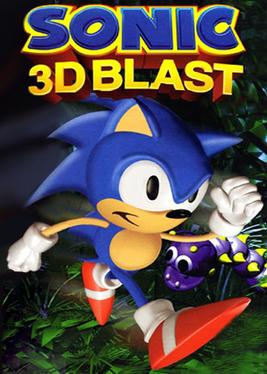
Sonic 3D Blast, known in PAL regions as Sonic 3D: Flickies' Island, is a 1996 platform game in the Sonic the Hedgehog series for the Sega Genesis and Sega Saturn. As Sonic the Hedgehog, the player embarks on a journey to save the Flickies, birds enslaved by Doctor Robotnik. The player must guide Sonic through a series of themed levels to collect Flickies and defeat Robotnik. Though it retains game mechanics from prior Sonic games, Sonic 3D Blast is differentiated by its 2D isometric perspective, with pre-rendered 3D models converted into sprites.
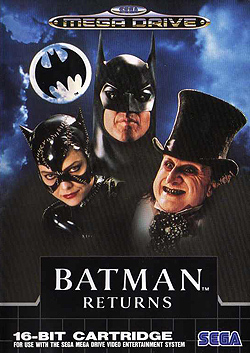
Batman Returns is the name of several video games for various platforms based on the 1992 film of the same name.
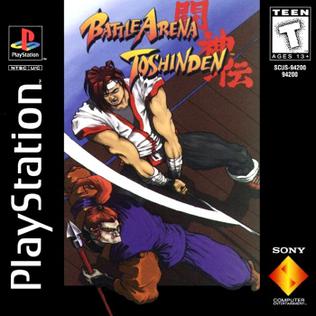
Battle Arena Toshinden, released as Toh Shin Den in Japan, is a 1995 fighting video game developed by Tamsoft and published by Takara for the PlayStation. It was one of the first fighting games, after Virtua Fighter on arcade and console, to boast polygonal characters in a 3D environment, and features a sidestep maneuver which is credited for taking the genre into "true 3D."
1993 saw many sequels and prequels in video games, such as Dragon Ball Z: Super Butōden, Mortal Kombat II, Secret of Mana, and Super Street Fighter II, alongside new titles such as Star Fox, FIFA International Soccer, Doom, Gunstar Heroes, Myst, Samurai Shodown, Ridge Racer, NBA Jam, Disney's Aladdin, and Virtua Fighter.
1992 saw many sequels and prequels in video games, such as Dragon Quest V, Final Fantasy V, Sonic the Hedgehog 2, Street Fighter II: Champion Edition, Super Mario Land 2: 6 Golden Coins, and Super Mario Kart, along with new titles such as Art of Fighting, Lethal Enforcers, Mortal Kombat and Virtua Racing.
1991 saw many sequels and prequels in video games, such as Street Fighter II, Final Fantasy IV, Super Castlevania IV, Mega Man 4, Super Ghouls 'n Ghosts, and The Legend of Zelda: A Link to the Past, along with new titles such as Sonic the Hedgehog, Battletoads, Lemmings, Sunset Riders, Duke Nukem, Fatal Fury: King of Fighters, and Streets of Rage. The year's highest-grossing video game worldwide was Capcom's arcade fighting game Street Fighter II. The year's best-selling system was the Game Boy for the second year in a row, while the year's best-selling home video game was Sega's Sonic the Hedgehog, which was also the year's top video game rental in the United States.
1990 saw many sequels and prequels in video games, such as Metal Gear 2: Solid Snake, Dr. Mario, Dragon Quest IV, Final Fantasy III, Phantasy Star II, and Super Mario World, along with new titles such as Fire Emblem: Shadow Dragon and the Blade of Light and Magic Sword. The year's highest-grossing arcade video games were Final Fight in Japan and Teenage Mutant Ninja Turtles in the United States. The year's best‑selling system was the Game Boy, while the year's best-selling home video game was Super Mario Bros. 3 for the Nintendo Entertainment System.
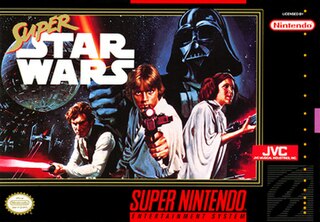
Super Star Wars is a 1992 action video game developed by LucasArts and Sculptured Software for the Super Nintendo Entertainment System. It is based on the 1977 film Star Wars. It was released by JVC Musical Industries in Japan and North America in 1992 and Europe in 1993. The game was followed by two sequels based on the subsequent Star Wars films, Super Star Wars: The Empire Strikes Back (1993) and Super Star Wars: Return of the Jedi (1994). The game was re-released in November 1996 as part of Nintendo's Player's Choice series. It was released on the Wii’s Virtual Console by LucasArts in 2009.
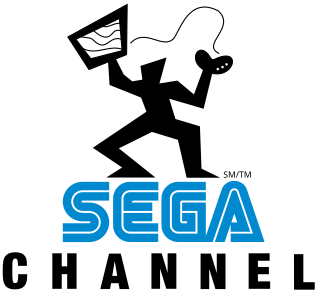
The Sega Channel was an online game service developed by Sega for the Sega Genesis video game console, serving as a content delivery system. Launched on December 14, 1994, the Sega Channel was provided to the public by TCI and Time Warner Cable through cable television services by way of coaxial cable. It was a pay to play service, through which customers could access Genesis games online, play game demos, and get cheat codes. Lasting until July 31, 1998, the Sega Channel operated three years after the release of Sega's next generation console, the Sega Saturn. Though criticized for its poorly timed launch and costly subscription fee, the Sega Channel has been praised for its innovations in downloadable content and impact on online game services.

Castle of Illusion Starring Mickey Mouse is a 1990 platform game developed and published by Sega and released for the Mega Drive/Genesis. An 8-bit version of the game was later released for the Master System and Game Gear. The game follows Mickey Mouse on a quest to save Minnie Mouse from the evil witch Mizrabel. It is the first game in Sega's Illusion video game series starring Mickey.

Dead or Alive is a 1996 fighting game developed and published by Tecmo for arcades. It is the first entry in the Dead or Alive series. Built on the Sega Model 2 hardware, it was released first in arcades in 1996, followed by home ports for the Sega Saturn in Japan during 1997, and for the PlayStation in all regions during 1998.
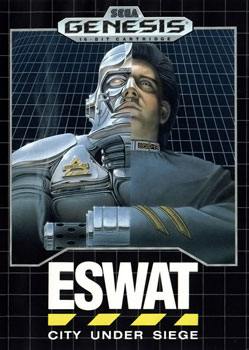
ESWAT: City Under Siege, released in Japan as Cyber Police ESWAT, is a 1990 side scrolling action platform video game developed and published by Sega for the Sega Genesis and Sega Master System video game consoles.

Rings of Power is a 1992 role-playing video game developed by Naughty Dog and published by Electronic Arts (EA) for the Sega Genesis. The player takes on the role of an apprentice sorcerer named Buc, whose quest is to assemble a team of adventurers and collect eleven rings to defeat the evil god Void.











